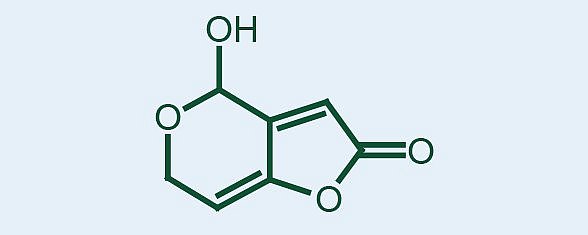What is Patulin?

The molds responsible for patulin production are common inhabitants of our environment. Patulin is a mycotoxin included in a group of compounds commonly known as toxic lactones. Patulin is a cyclic compound that is not fluorescent.
Production and occurrence
Patulin is produced by several fungi, most of which belong to the genera Aspergillus and Penicillium. Patulin actually gets its name from the mold Penicillium patulinum. Since 1986, additional genera have been added to the potential list of patulin producers.
Patulin contamination is primarily associated with damaged and rotting fruits and fruit juices made from poor quality fruits. Patulin producing molds are found on such fruits as peaches, pears, grapes and especially apples. Recent reports indicate that patulin can be found in some vegetables. By far the most common site of occurrence of patulin is in apples.
Patulin is particularly associated with apples exhibiting “brown rot” or other rotting characteristics. Any fruit with visible signs of rotting, decay or mold growth can be suspect and containing patulin (Frank, 1977).
Fruits stored under conditions that promote bruising and rotting increase the probability of patulin formation. Patulin is very stable in apple juice and grape juice. In many foodstuffs, sucrose actually protects patulin from degradation during heat treatment.
Toxicity
While patulin may be an important mycotoxin in problems associated with silage, confirmation of such has not be established but should be considered when investigating silage problems in especially dairy cattle. Initial studies of patulin indicated that it had antibiotic properties against certain bacteria. Further studies indicated, however, that the patulin was too toxic for use in humans. While some animal studies suggest a carcinogenic potential of patulin (Becci et al., 1981) by IARC. Symptoms of patulin include hemorrhaging in the digestive tract in cattle.
Published on:
Mycotoxin